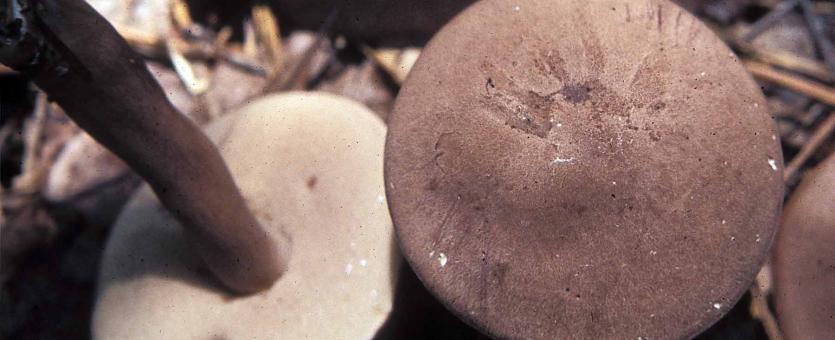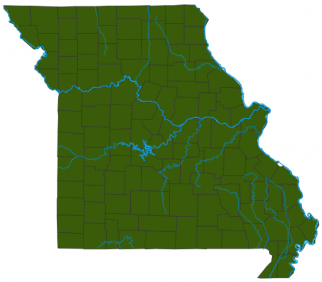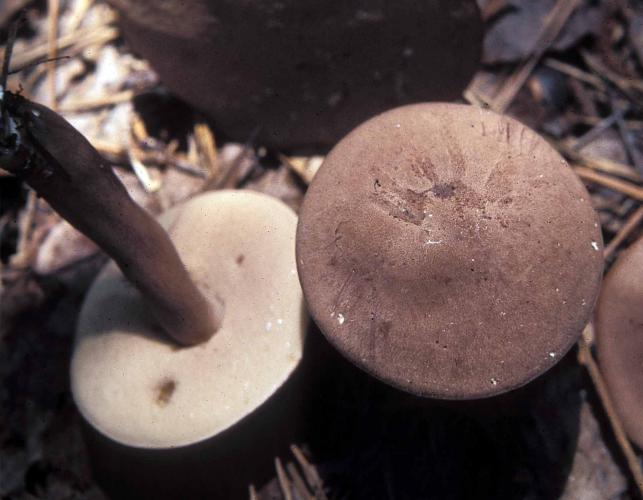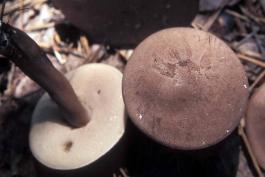
Large, violet-gray cap with cream-pink pores; violet stalk that is sometimes webbed. Grows scattered on the ground in mixed woods. June–September. Cap convex, becoming flat; violet, turning grayish purple, then brownish; texture dry, smooth; flesh is white. Pores small; round; cream becoming pinkish tan. Stalk enlarging slightly toward the base; violet, even after cap fades; texture smooth; sometimes becoming webbed with a darker violet. Spore print pinkish brown. Spores magnified are smooth, elliptical.
Lookalikes: Other Boletus species.
Cap width: 1½–7 inches; stalk length: 3–4½ inches; stalk width: ¼–1¼ inches.

Statewide.
Habitat and Conservation
Grows scattered on the ground in mixed woods.
Status
Not edible. The violet-gray bolete is quite bitter.
Life Cycle
This species is mycorrhizal: It exists most of the time as a network of cells (mycelium) connected to tree roots, in a symbiotic relationship with the tree. (Many trees fare poorly without their fungal partners.) When ready to reproduce, the mycelium sends up the “mushroom” aboveground—this is the reproductive structure. In boletes, spores are produced in the pores under the cap and are released to begin new mycelia elsewhere. The mycelium of a mushroom can live for decades.
Human Connections
Mushrooms decorate nature the way wildflowers do, adding to our pleasure on hikes. Like wildflowers, fungi can be strikingly beautiful. Although it turns brownish with age, in its prime the violet-gray bolete is a beautiful mushroom.
Ecosystem Connections
This is one of many fungus species that help nourish forest trees through symbiosis. The netlike fibers of the fungus cover the surface of the tree's roots, increasing the surface area and the roots' ability to absorb water and nutrients. In return, the tree shares nutrients with the fungus.


Mushrooms are a lot like plants, but they lack chlorophyll and have to take nutrients from other materials. Mushrooms are neither plants nor animals. They are in a different kingdom — the fungi. Fungi include the familiar mushroom-forming species, plus the yeasts, molds, smuts, and rusts.
Always be cautious when eating edible mushrooms. Be absolutely sure of the ID, and only eat a small amount the first time you try it to avoid a reaction..





















